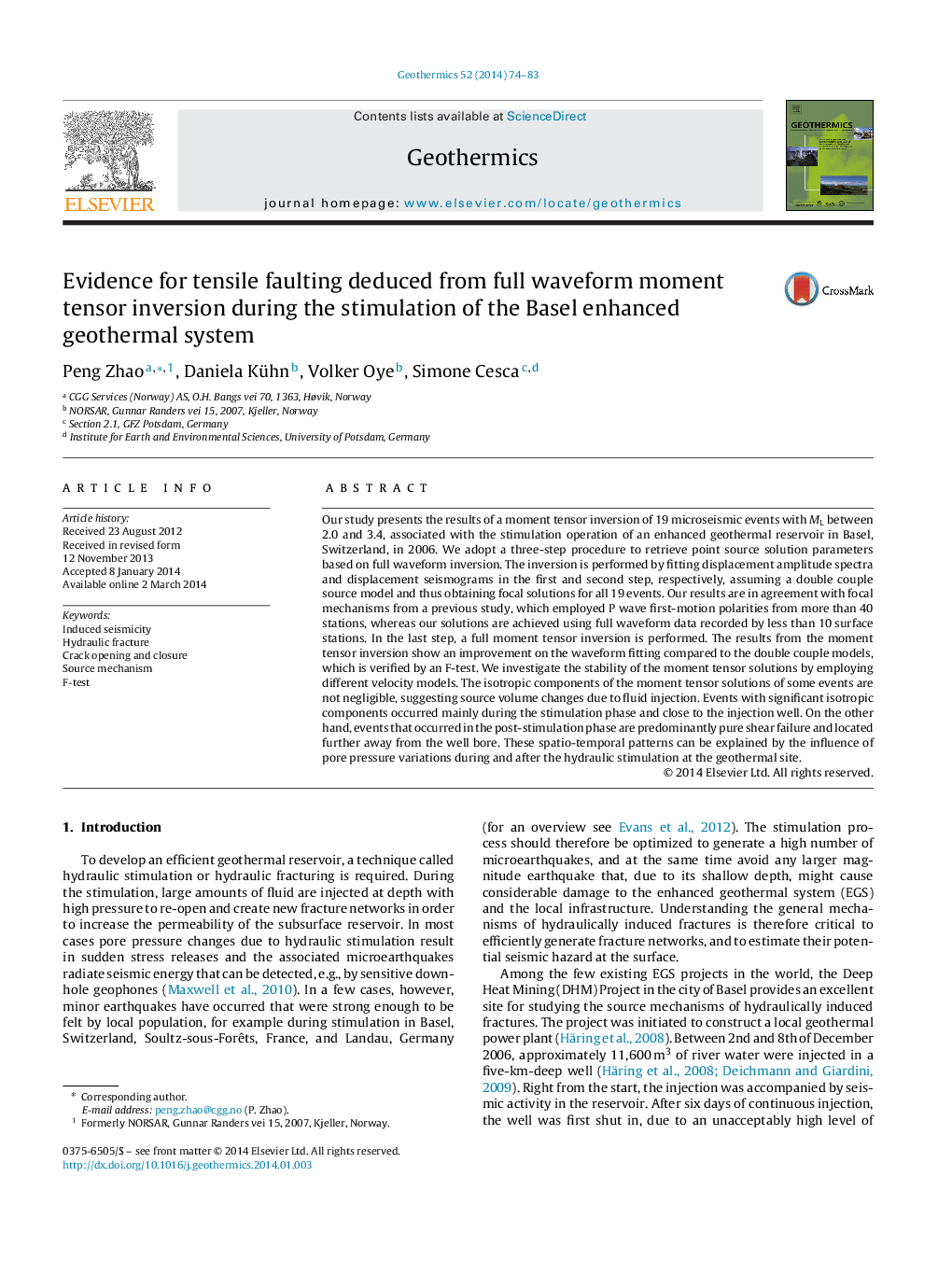| Article ID | Journal | Published Year | Pages | File Type |
|---|---|---|---|---|
| 1742331 | Geothermics | 2014 | 10 Pages |
•We perform a moment tensor inversion of induced microearthquakes in Basel.•The moment tensor solutions indicate source volume change due to fluid injection.•Events with significant isotropic components occurred mainly during the injection.•Events occurred in the post-stimulation are predominantly pure shear failure.•The observed spatio-temporal patterns can be linked to pore pressure variations.•We apply F-test and different velocity models to determine the stability of our MT results.
Our study presents the results of a moment tensor inversion of 19 microseismic events with ML between 2.0 and 3.4, associated with the stimulation operation of an enhanced geothermal reservoir in Basel, Switzerland, in 2006. We adopt a three-step procedure to retrieve point source solution parameters based on full waveform inversion. The inversion is performed by fitting displacement amplitude spectra and displacement seismograms in the first and second step, respectively, assuming a double couple source model and thus obtaining focal solutions for all 19 events. Our results are in agreement with focal mechanisms from a previous study, which employed P wave first-motion polarities from more than 40 stations, whereas our solutions are achieved using full waveform data recorded by less than 10 surface stations. In the last step, a full moment tensor inversion is performed. The results from the moment tensor inversion show an improvement on the waveform fitting compared to the double couple models, which is verified by an F-test. We investigate the stability of the moment tensor solutions by employing different velocity models. The isotropic components of the moment tensor solutions of some events are not negligible, suggesting source volume changes due to fluid injection. Events with significant isotropic components occurred mainly during the stimulation phase and close to the injection well. On the other hand, events that occurred in the post-stimulation phase are predominantly pure shear failure and located further away from the well bore. These spatio-temporal patterns can be explained by the influence of pore pressure variations during and after the hydraulic stimulation at the geothermal site.
